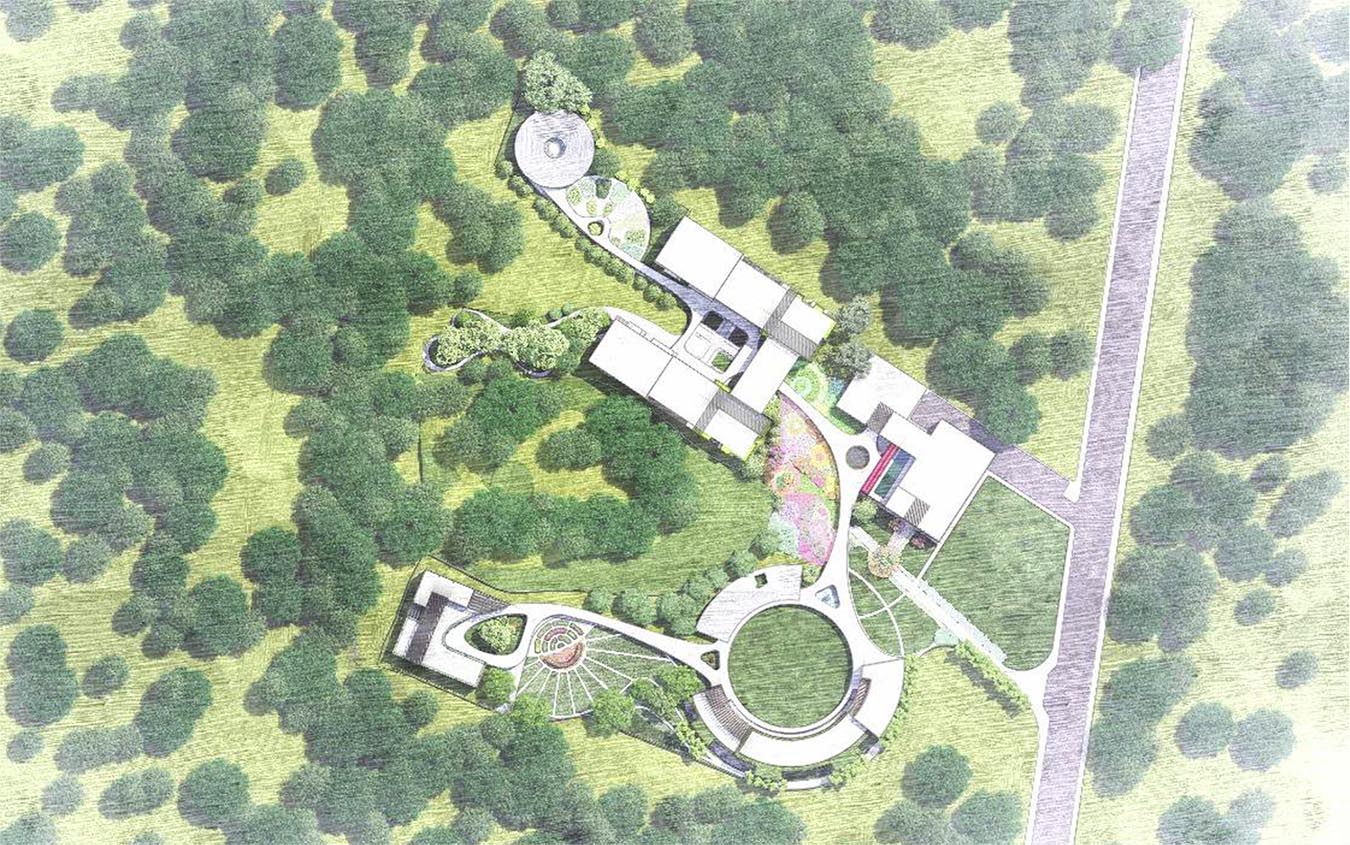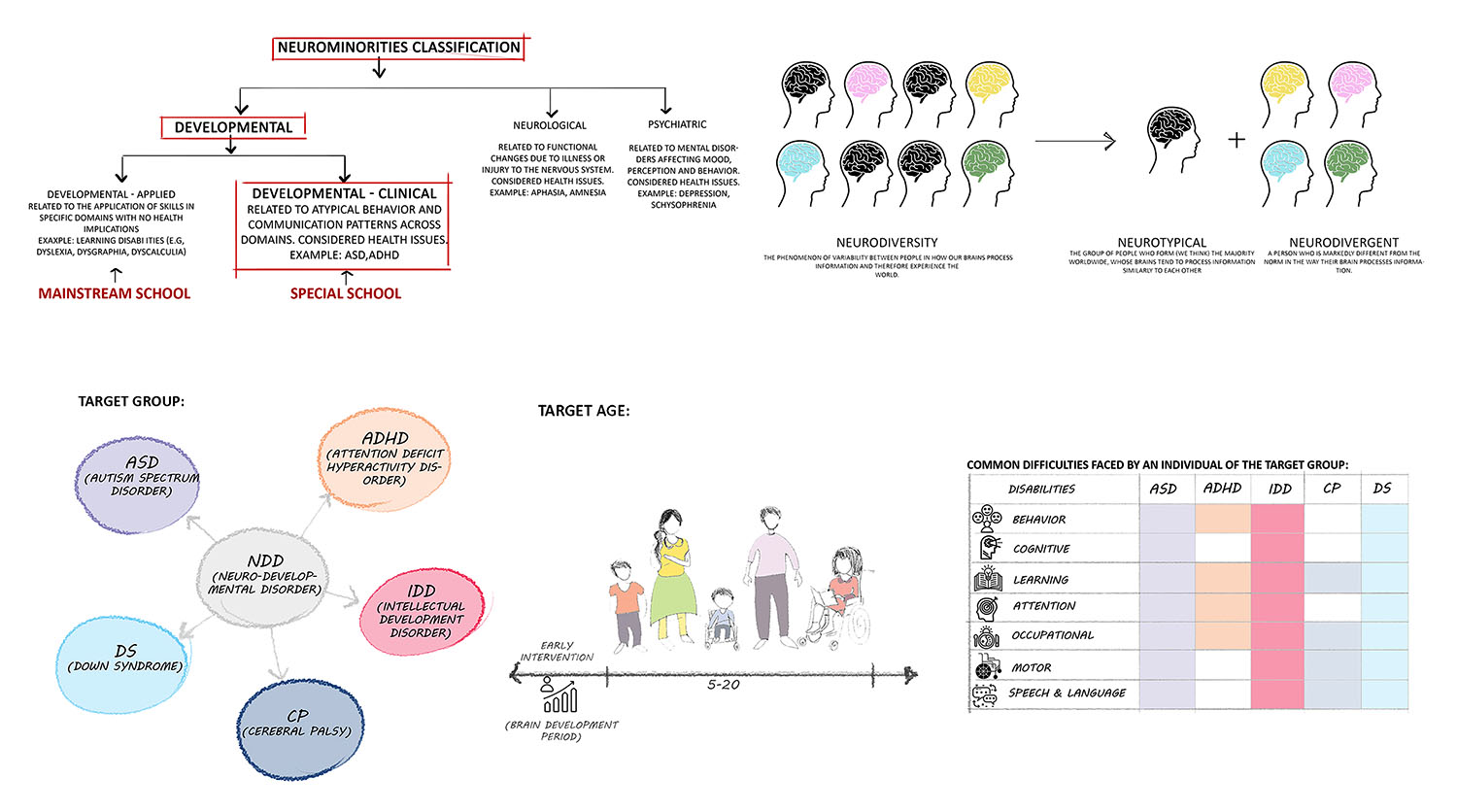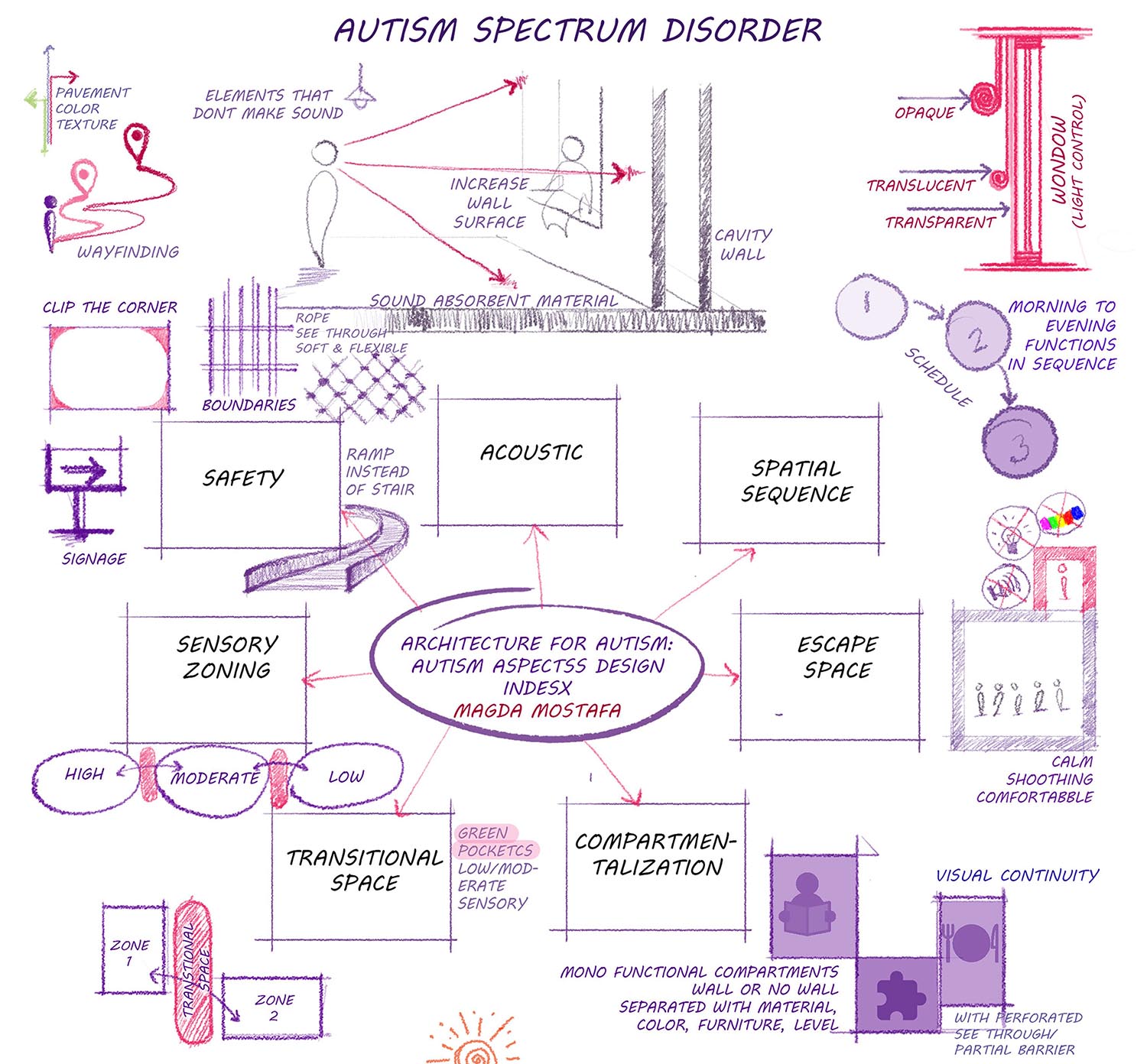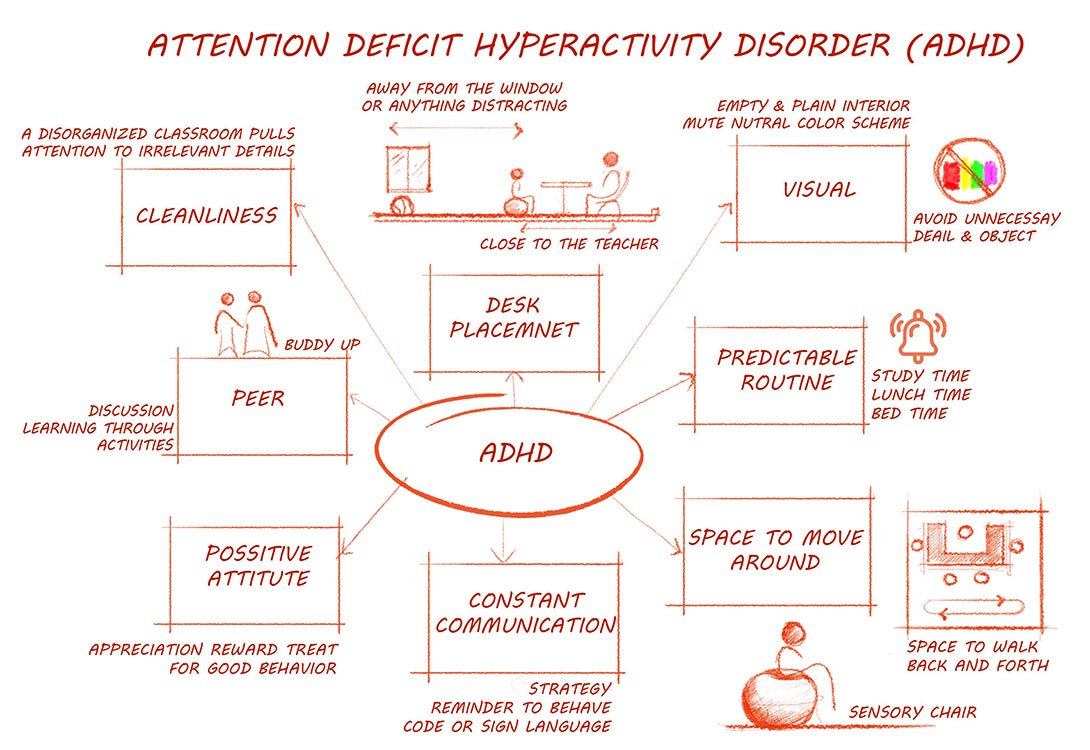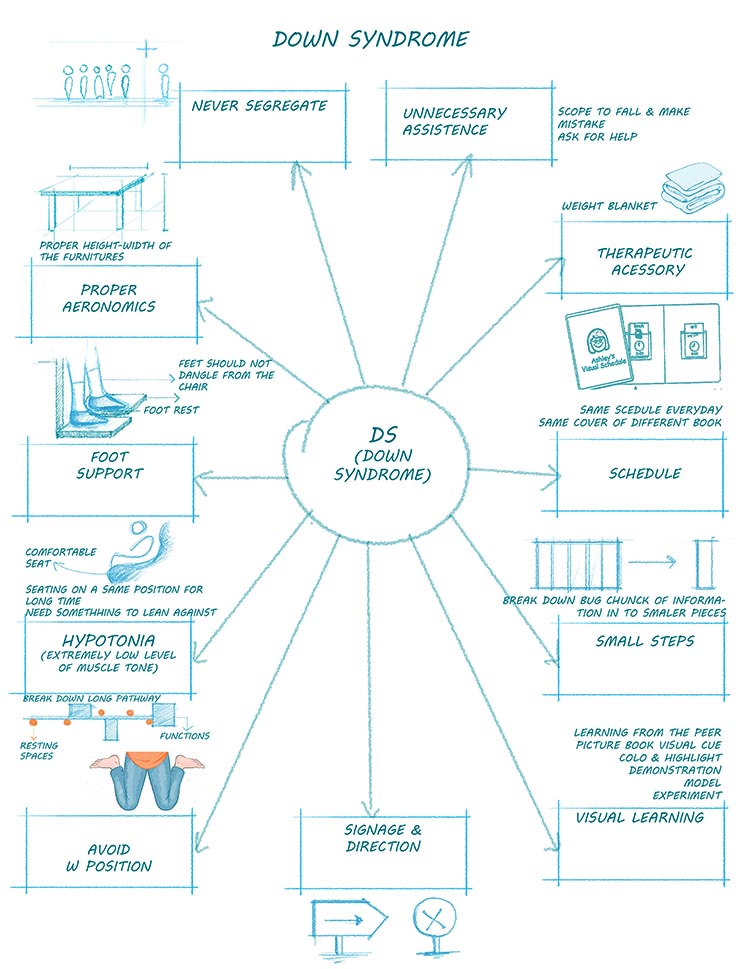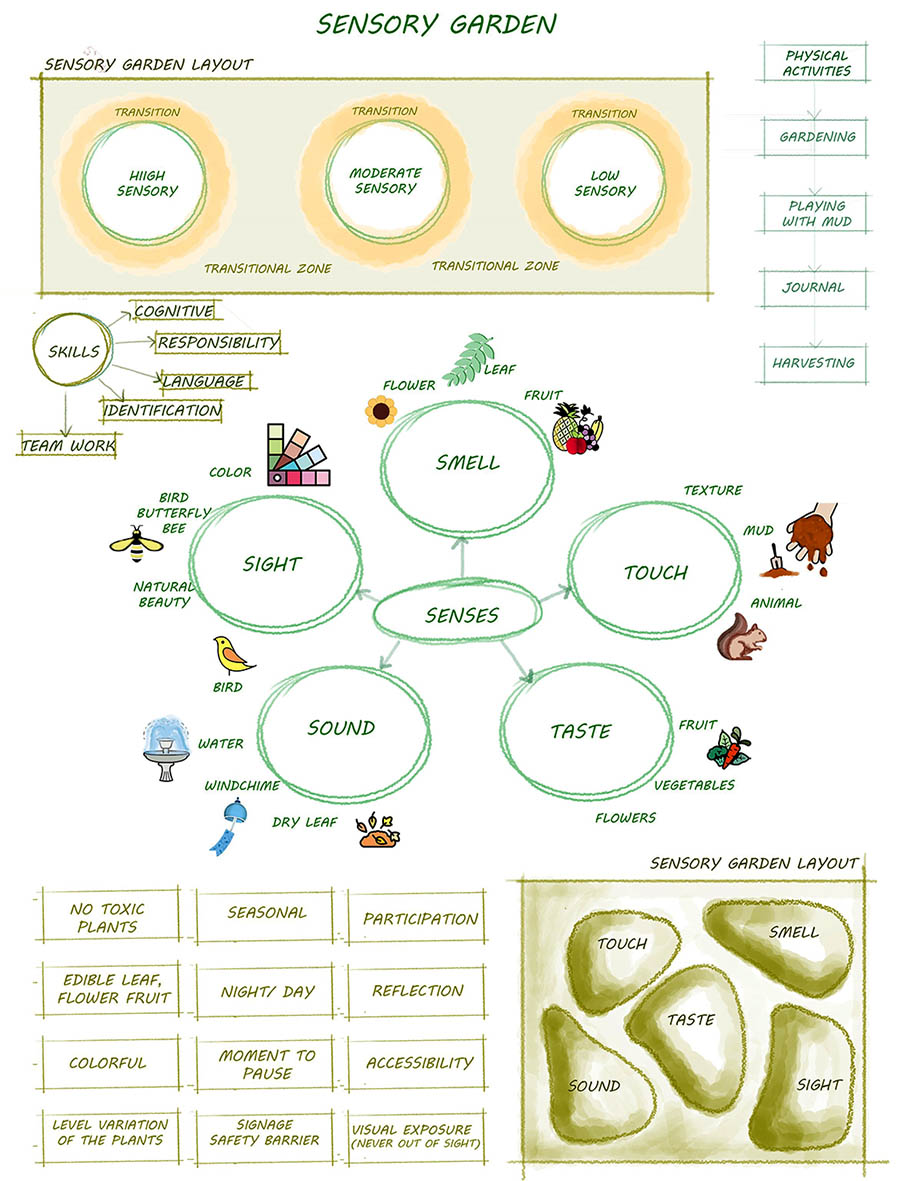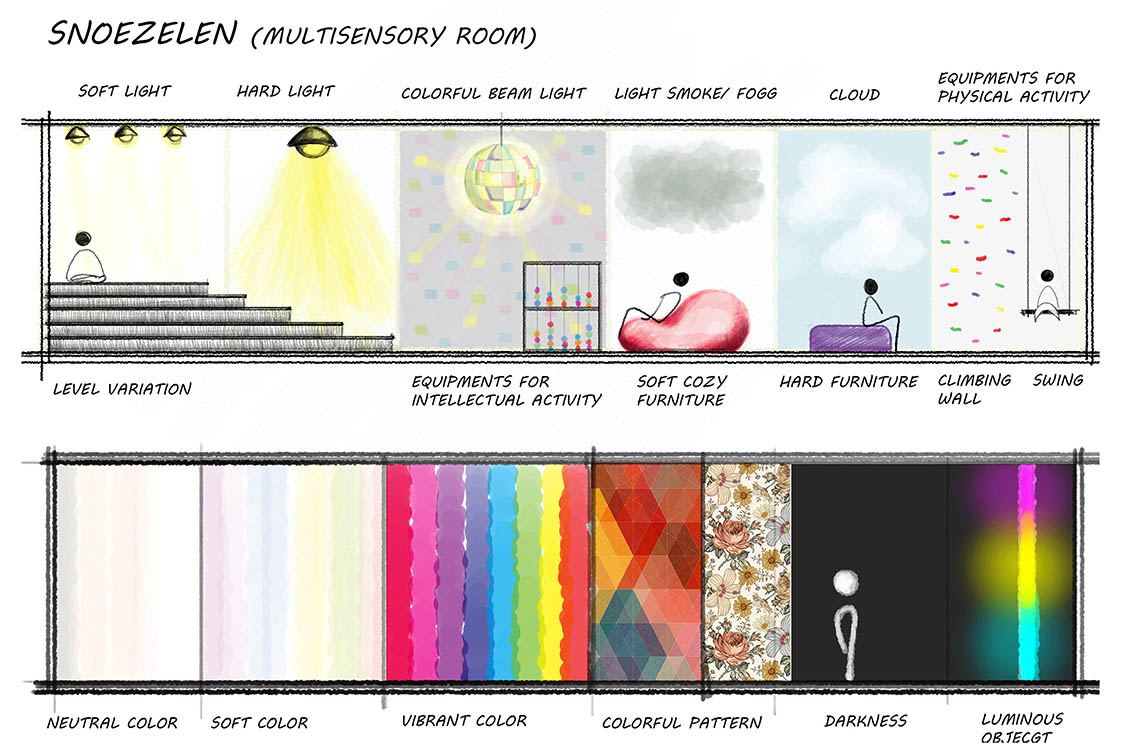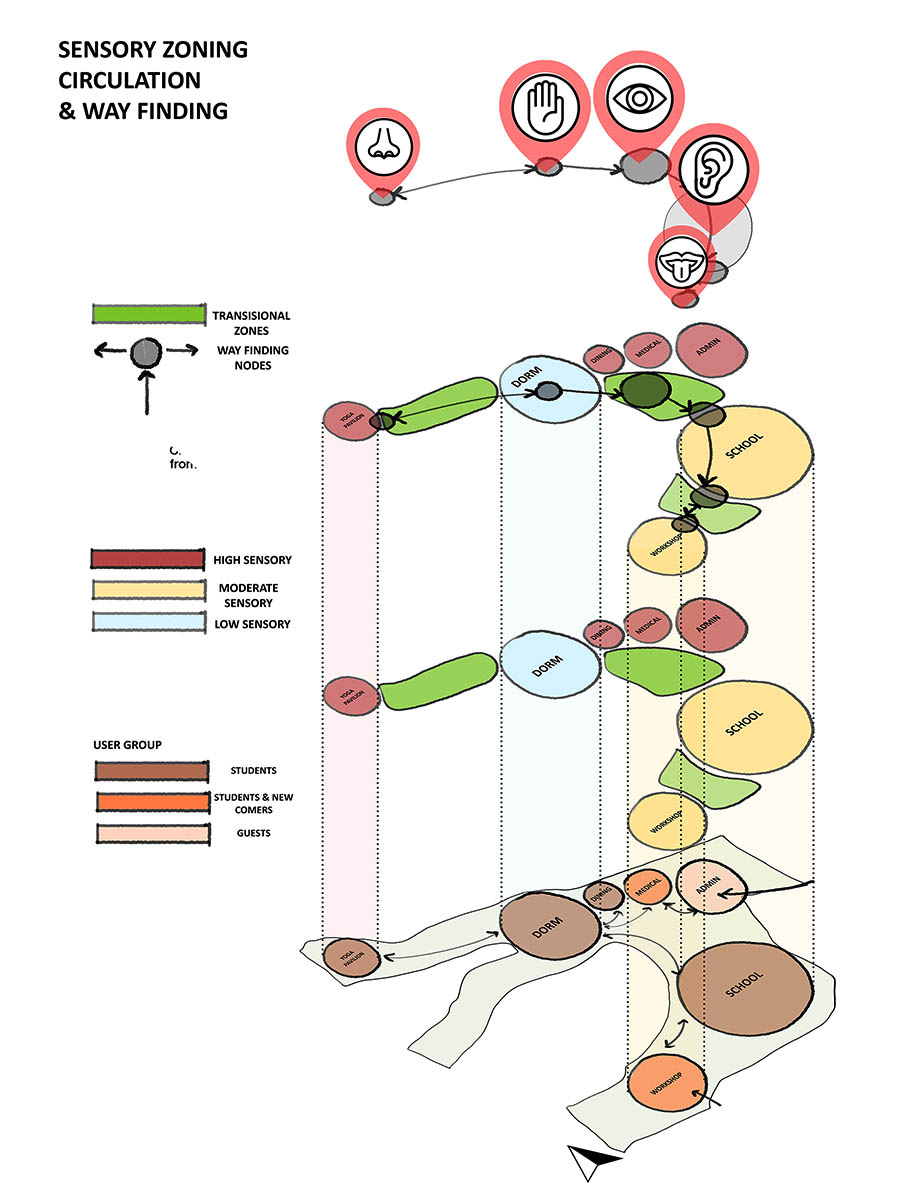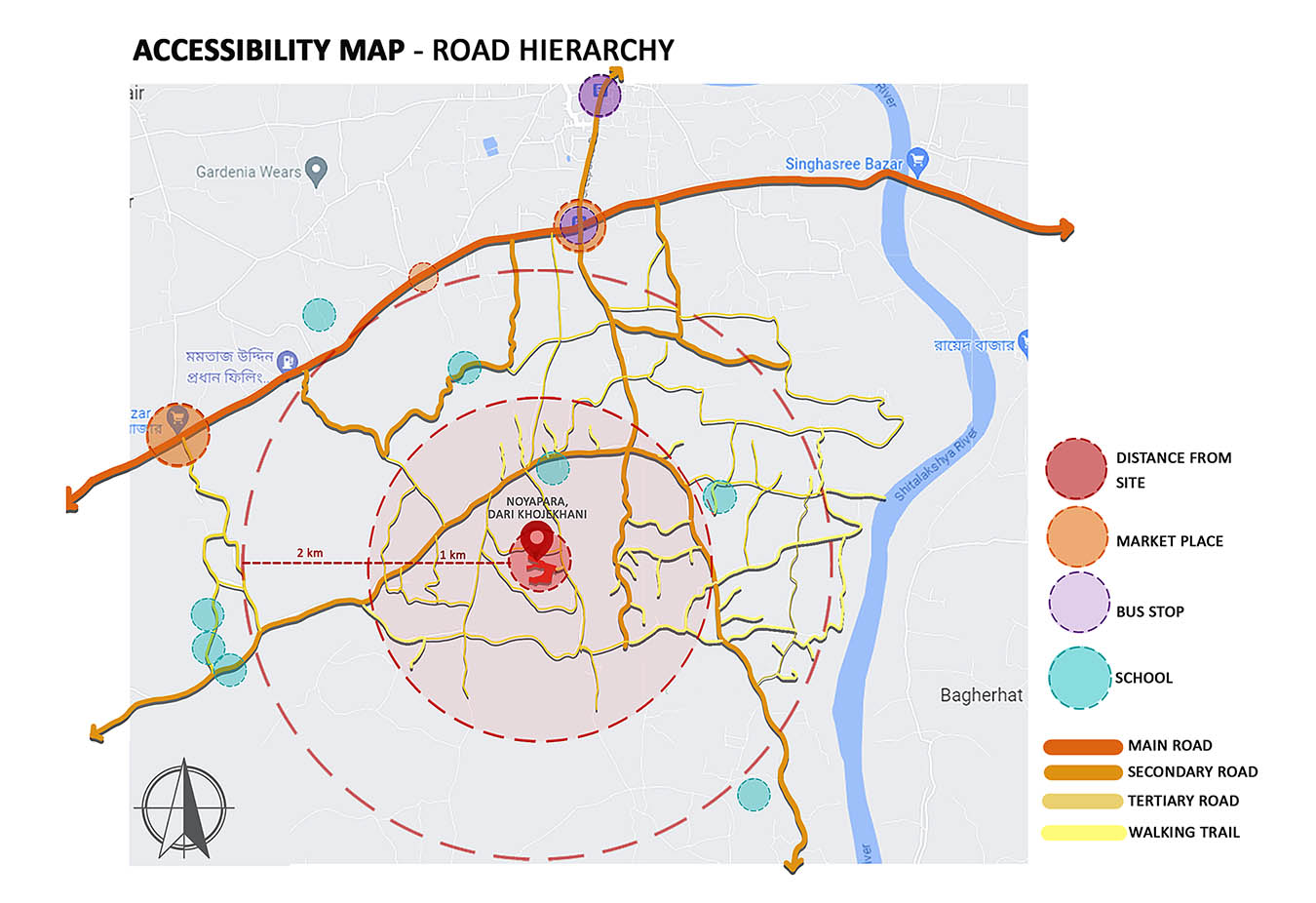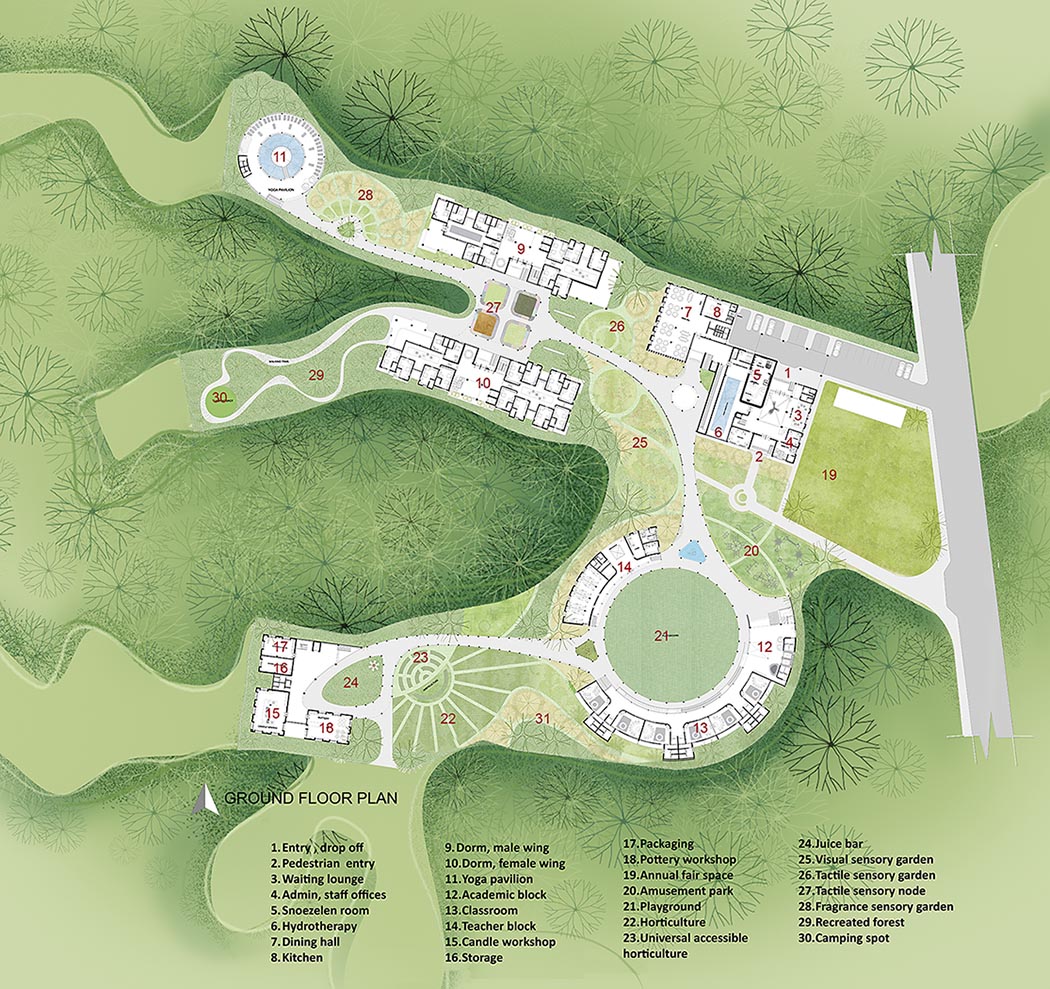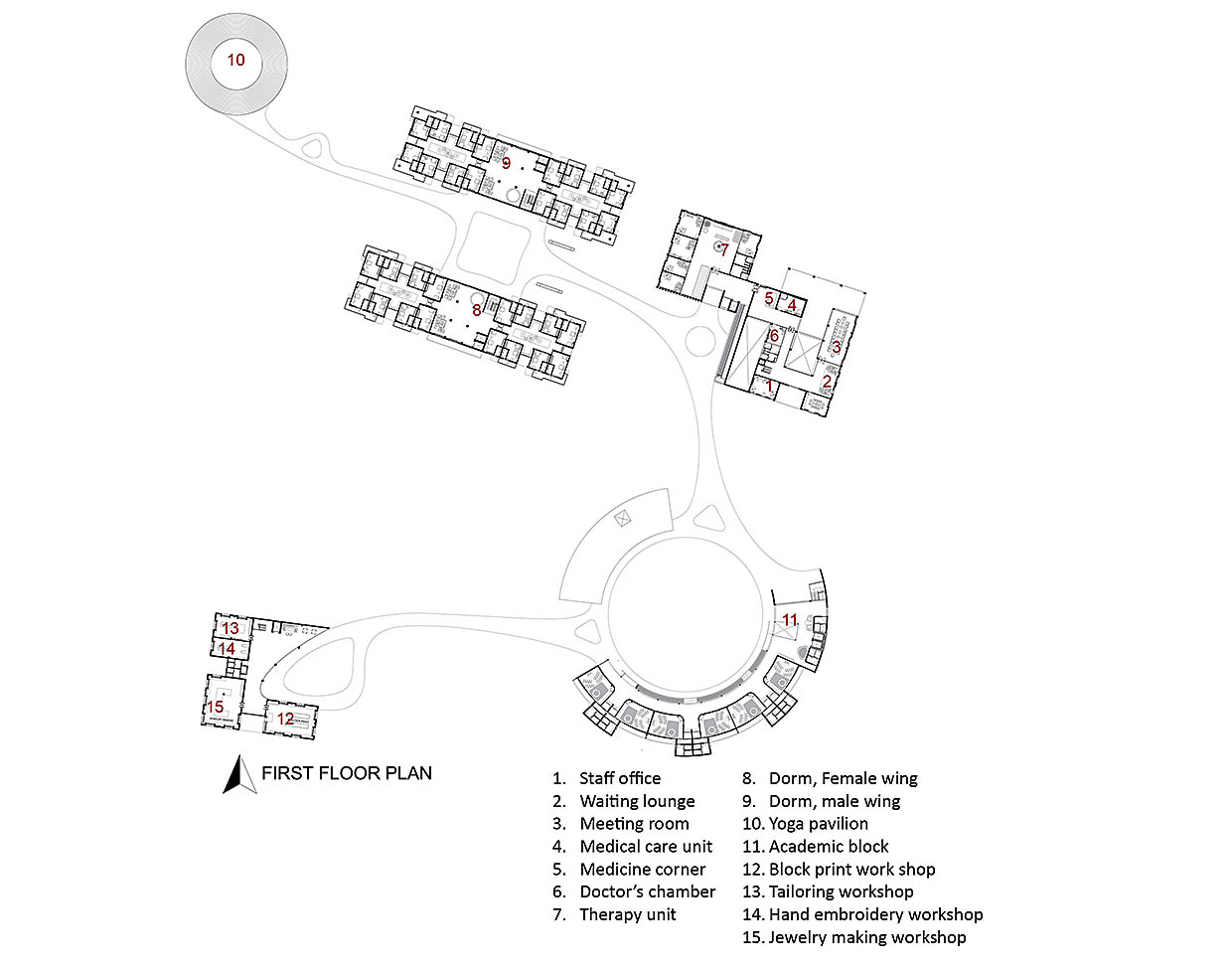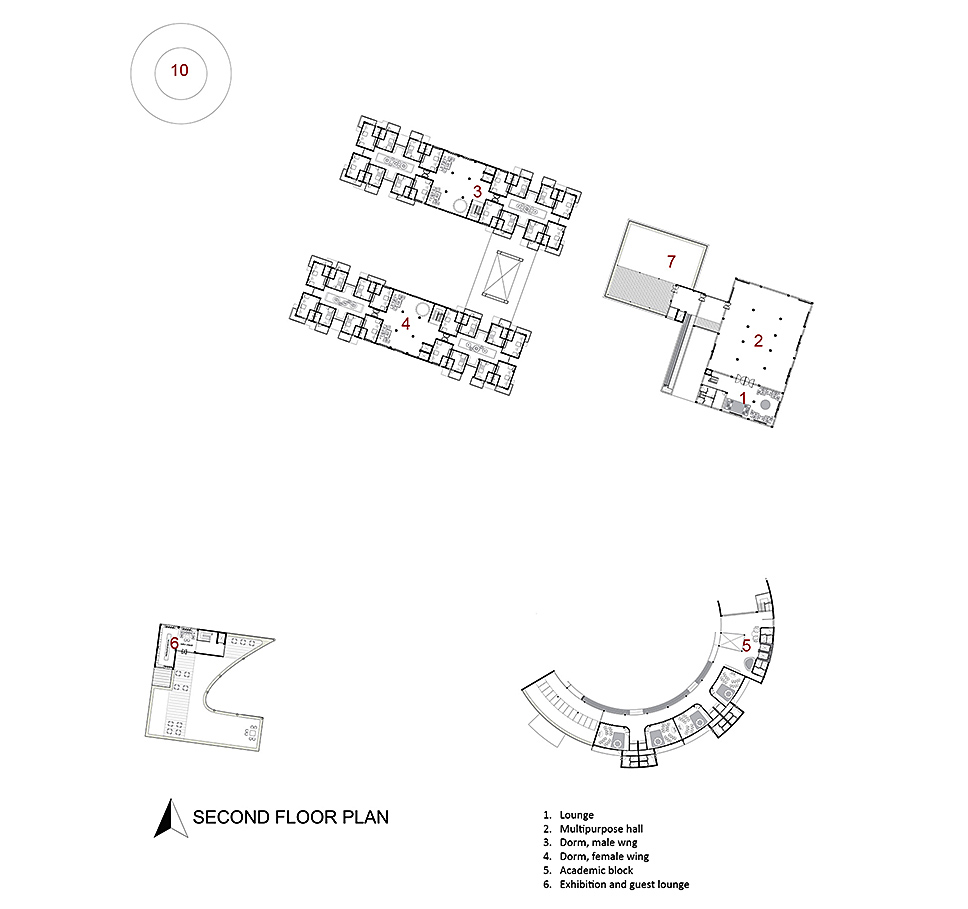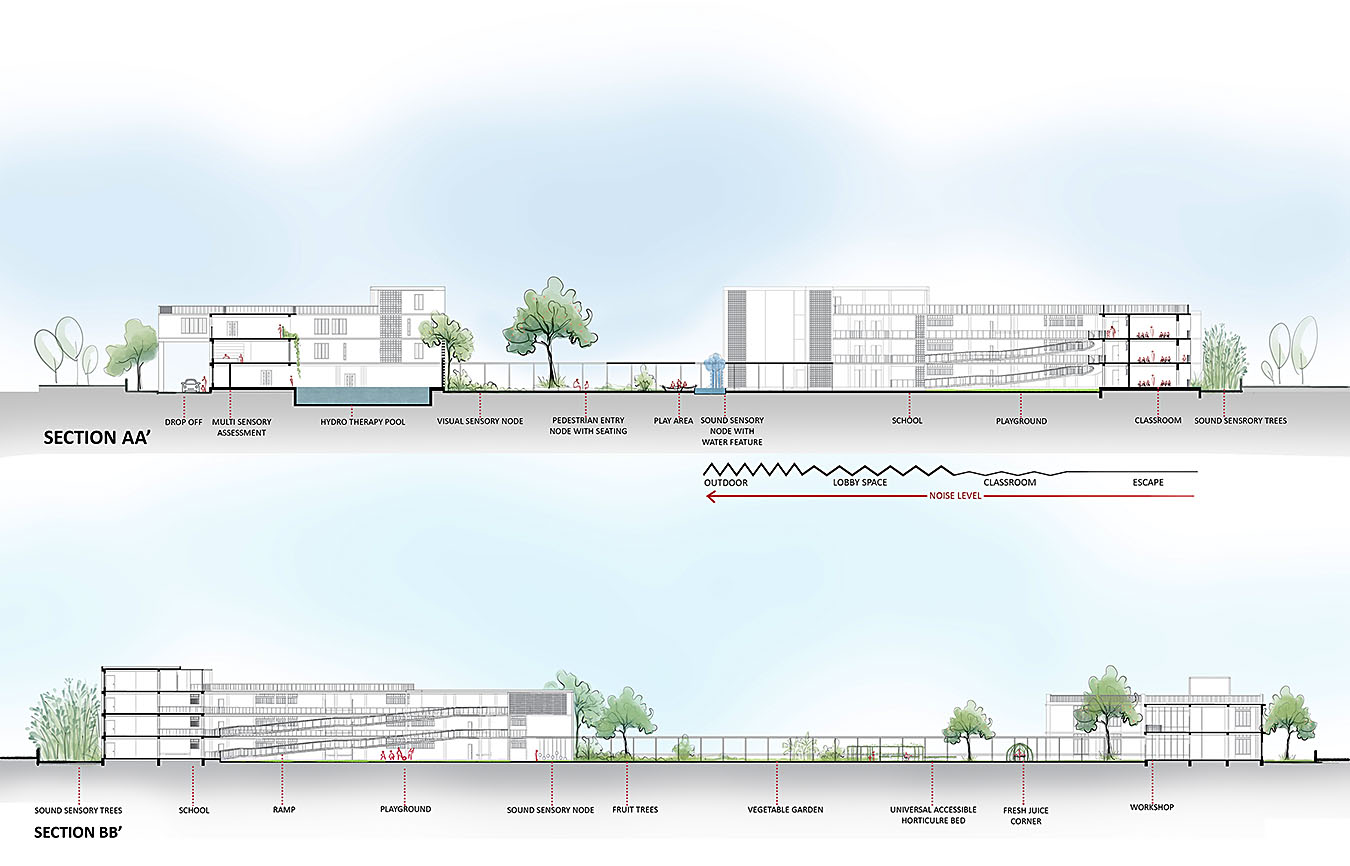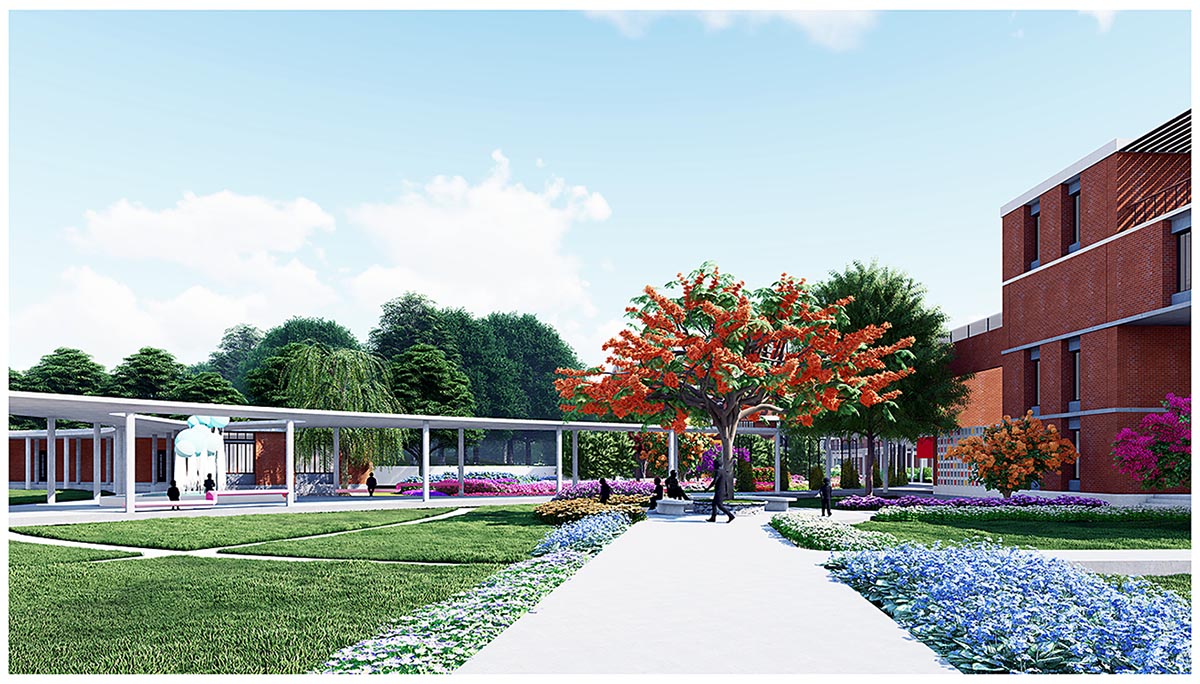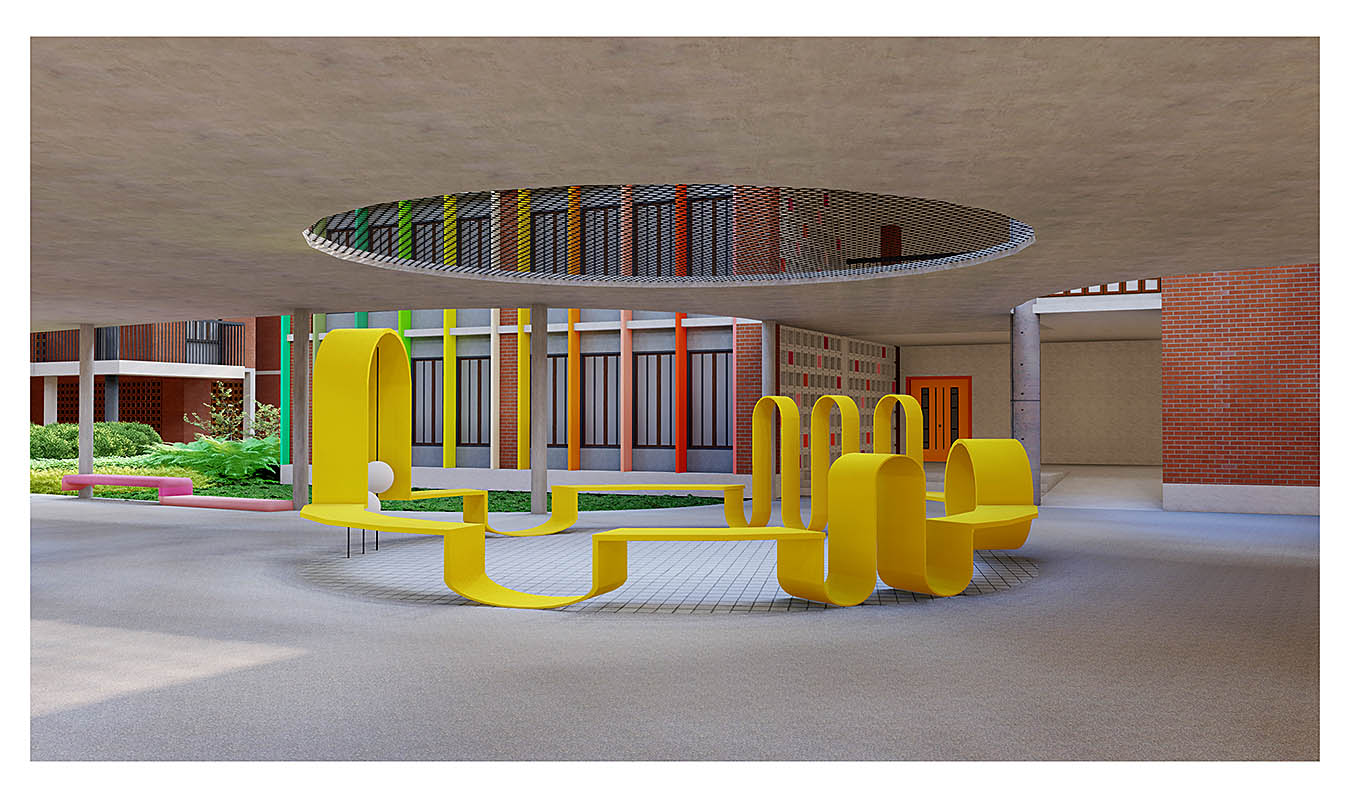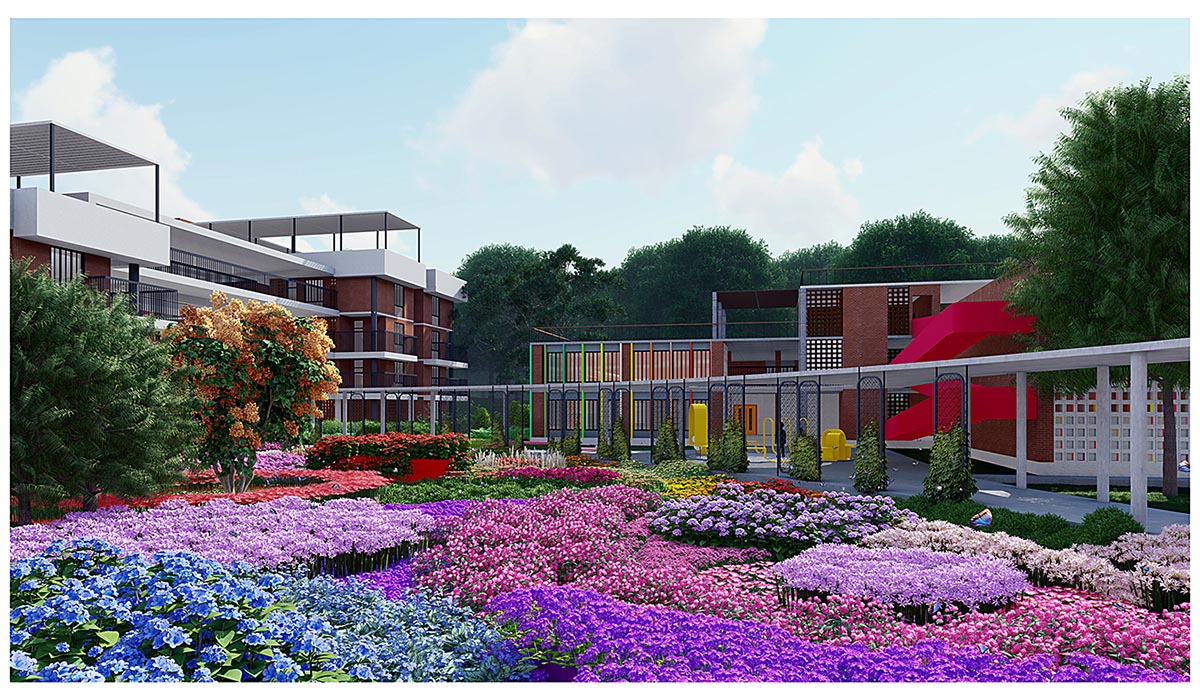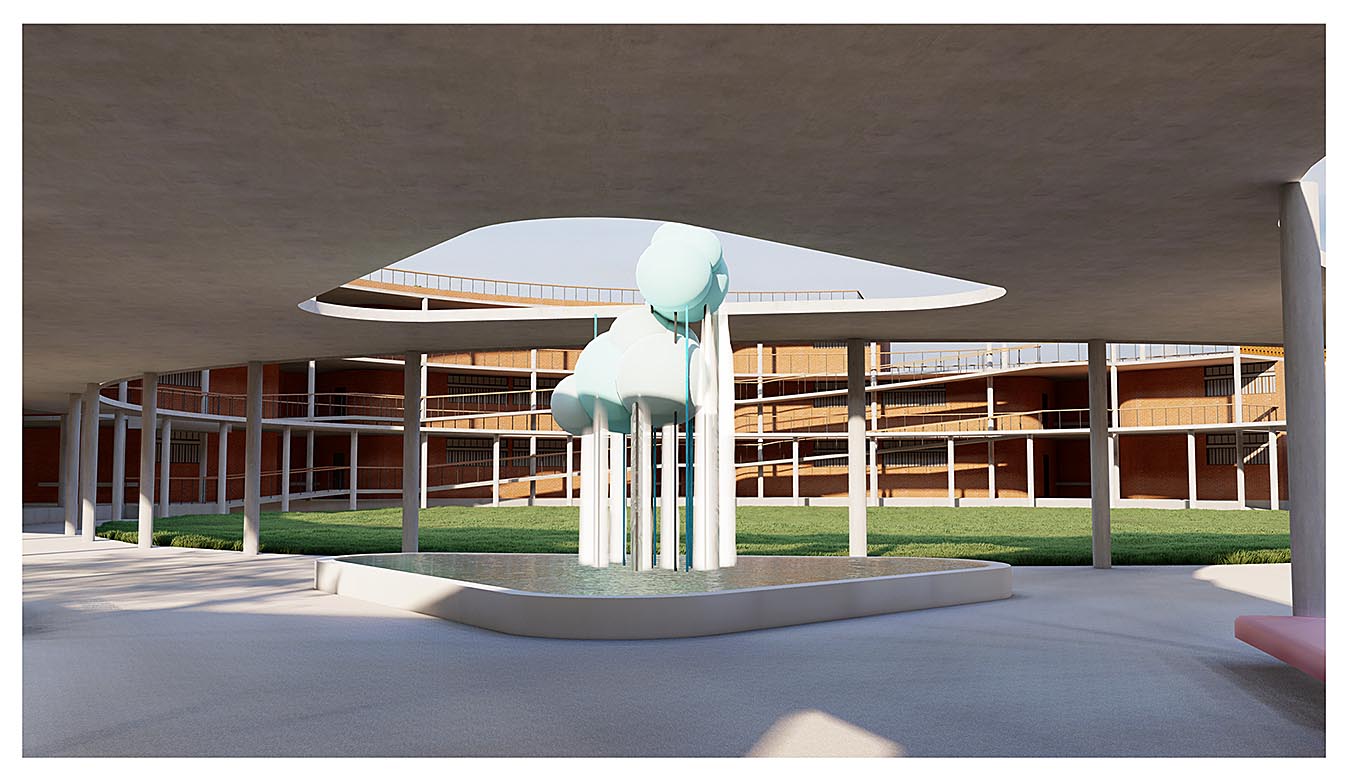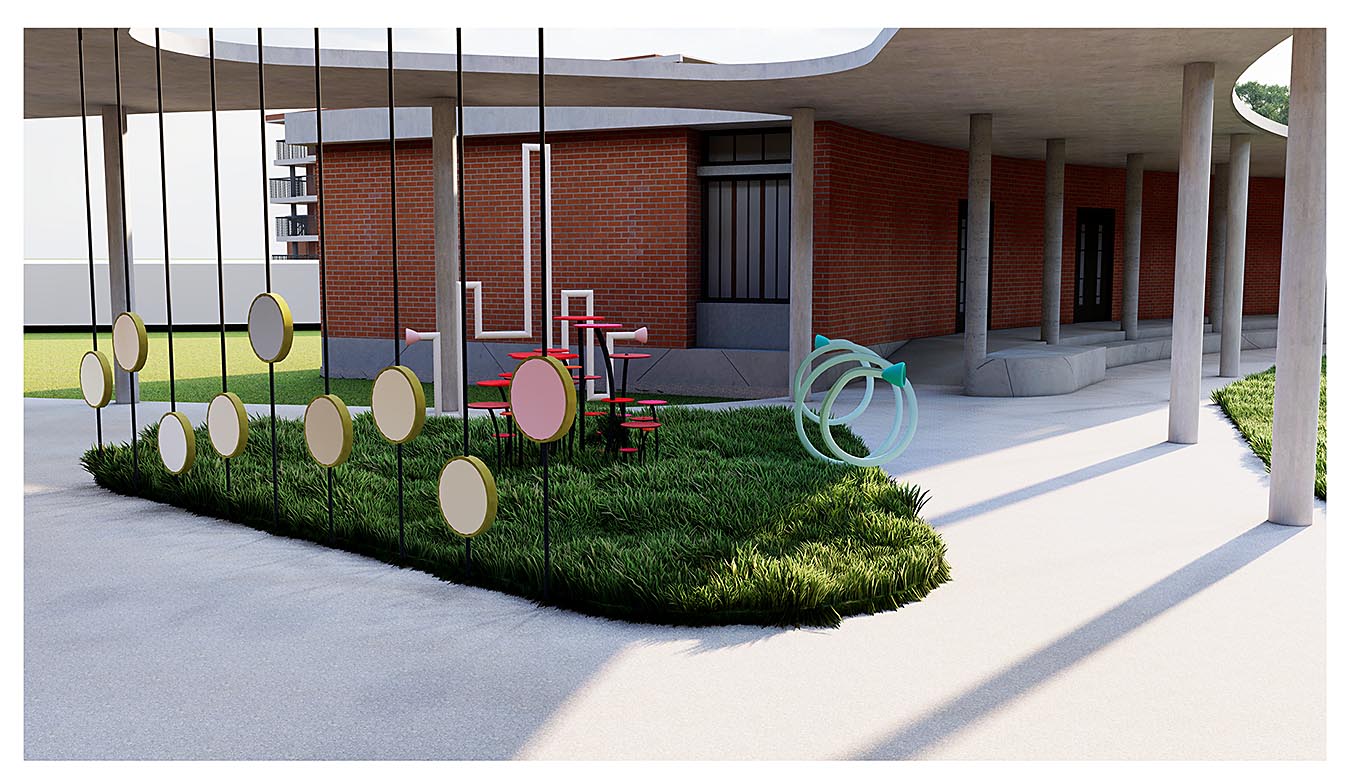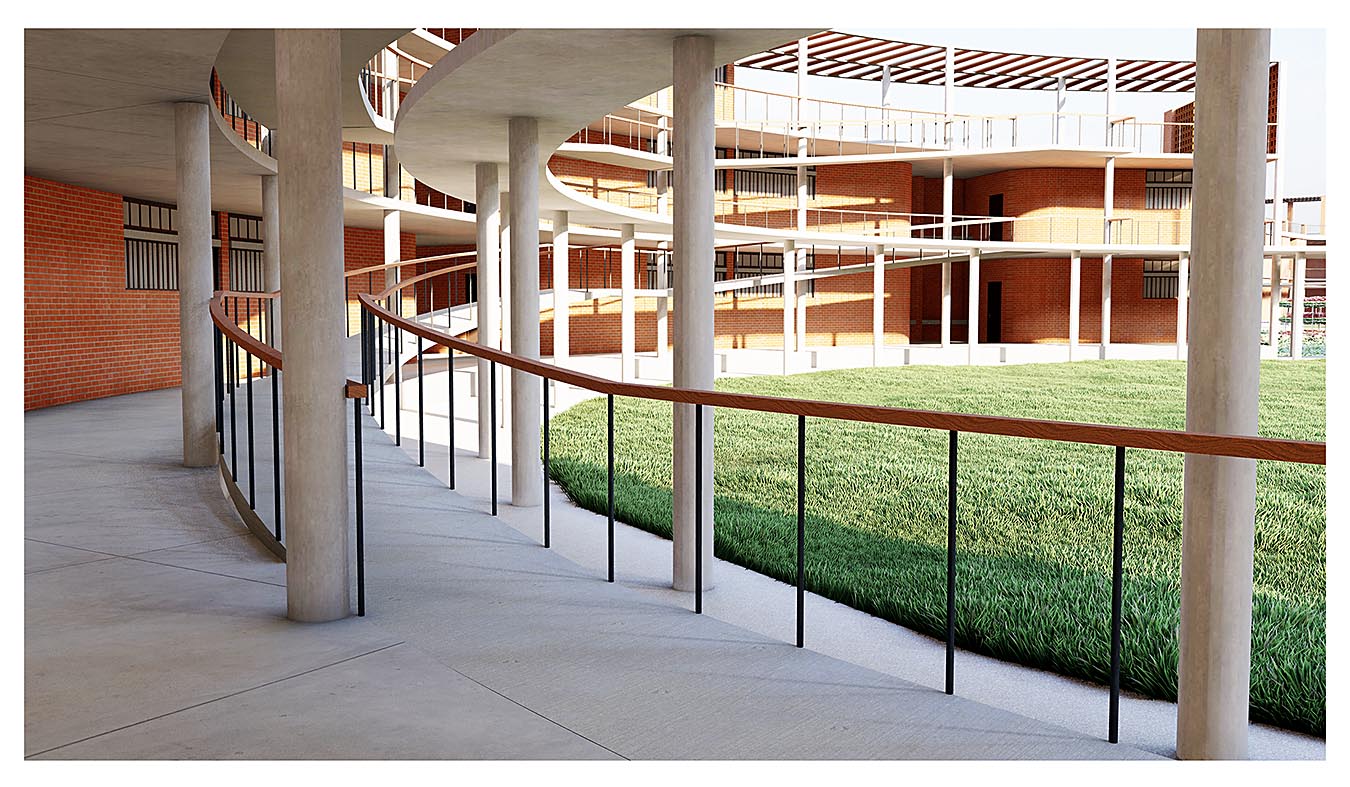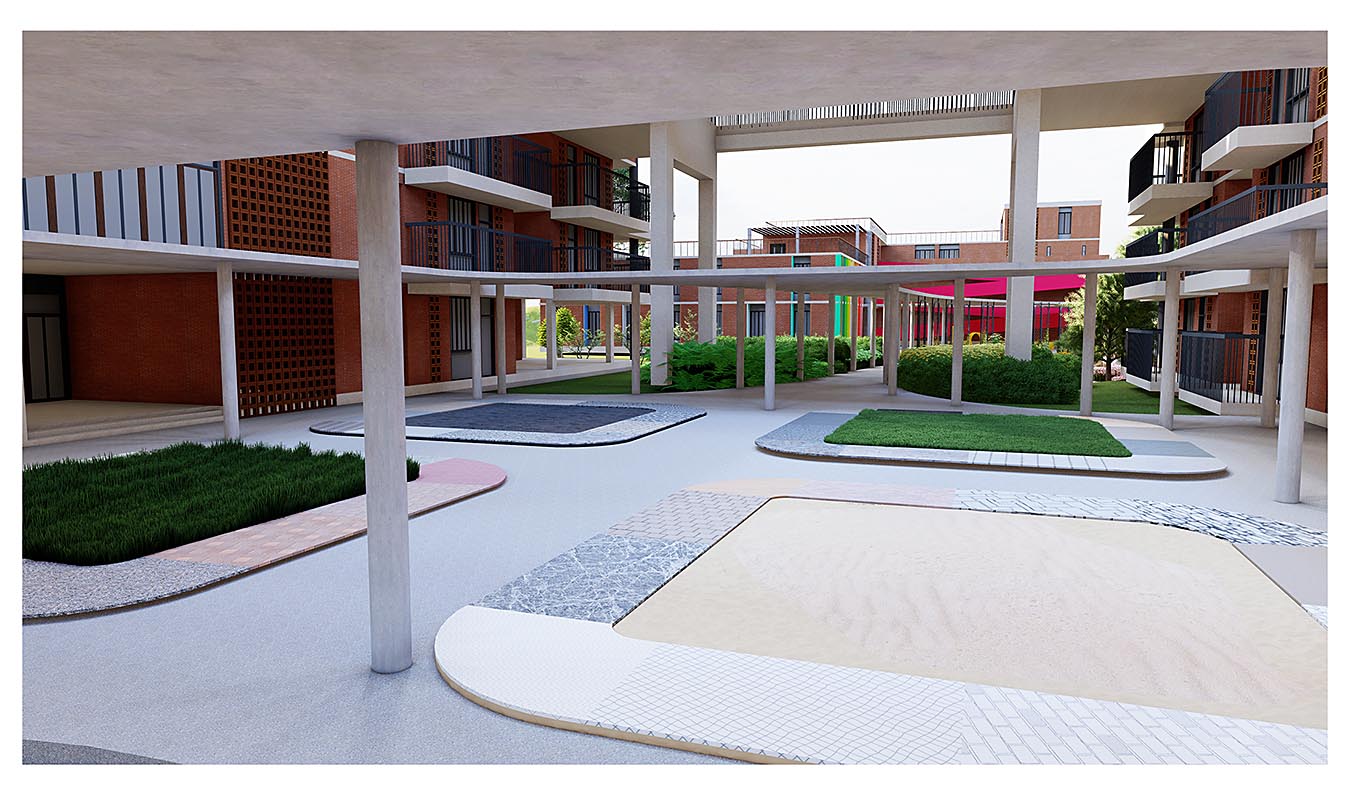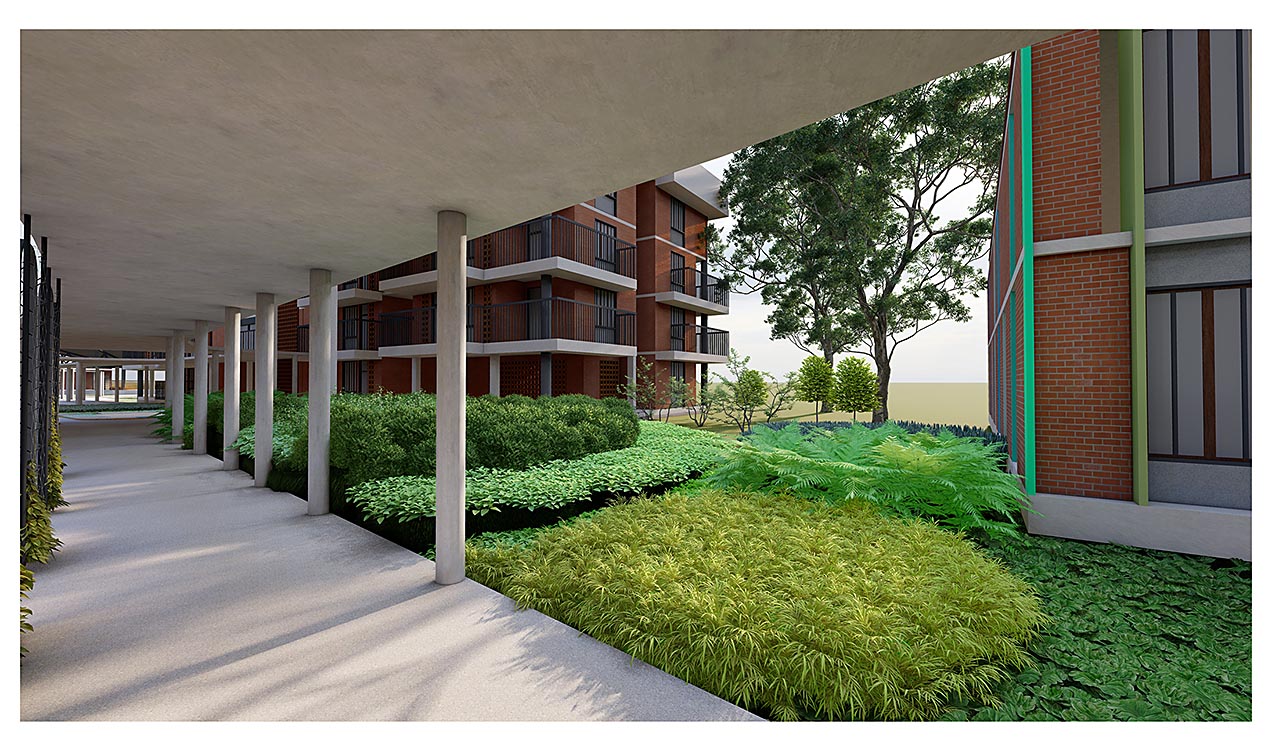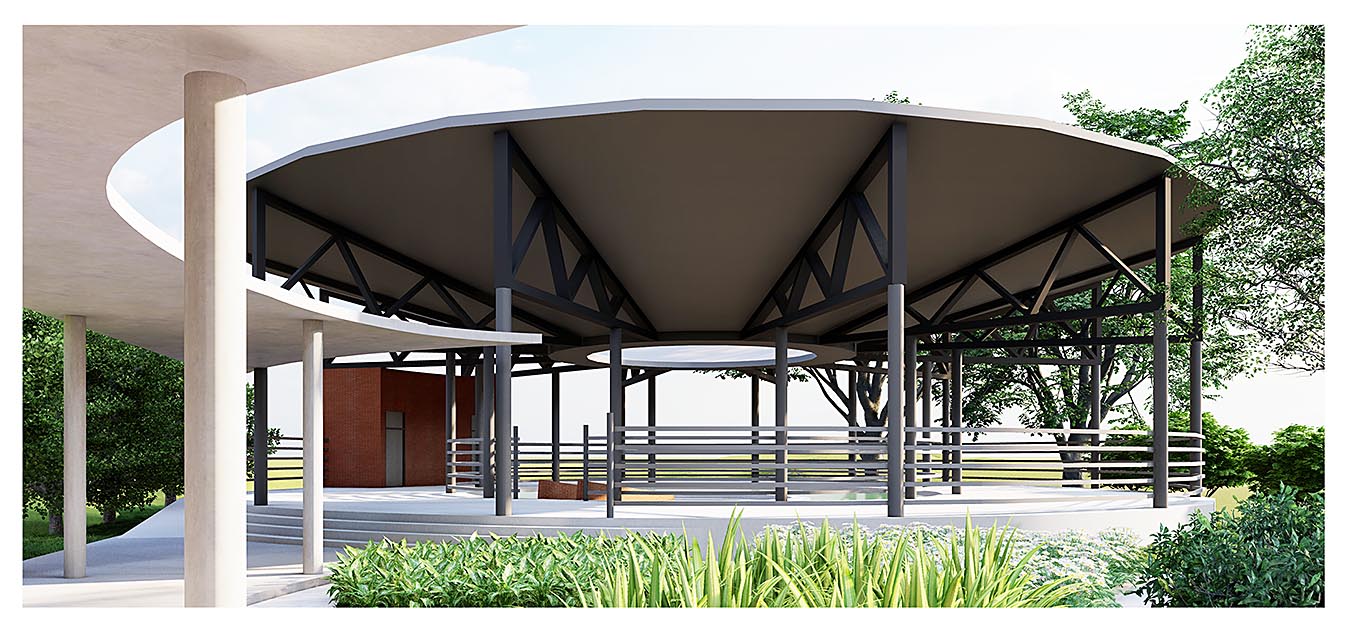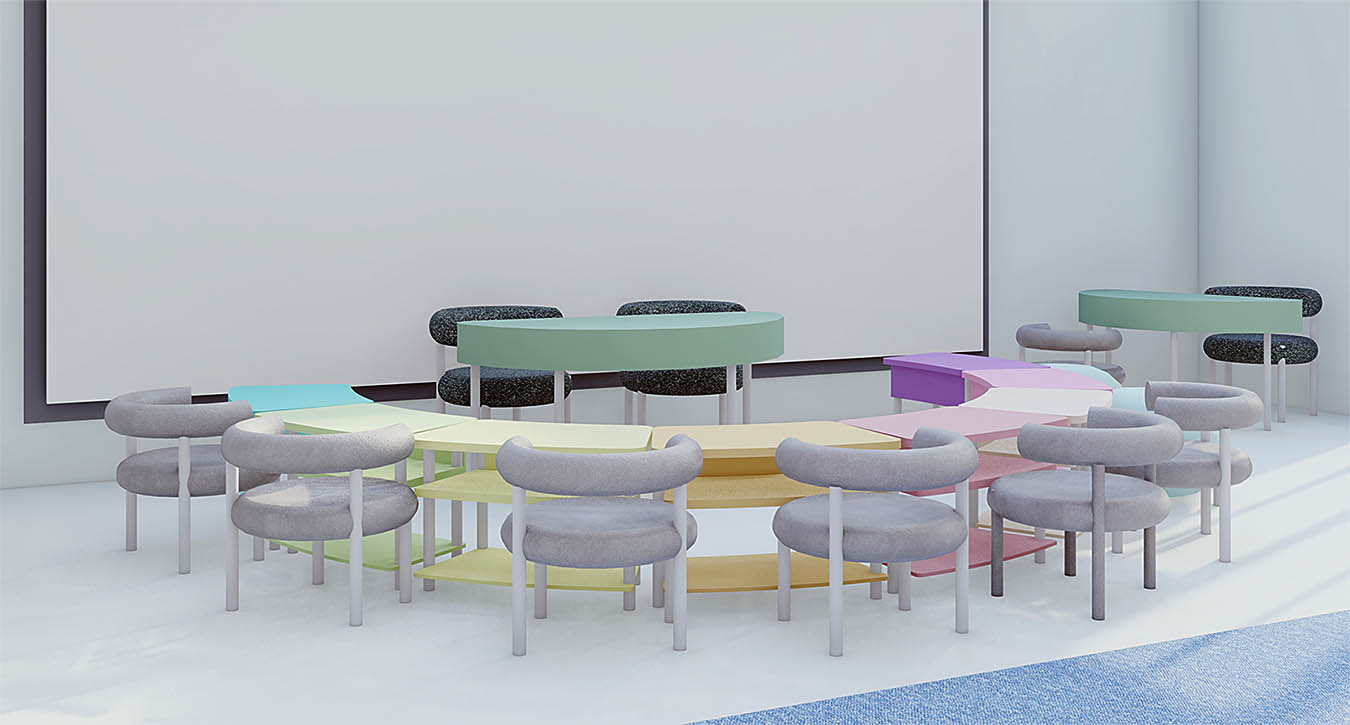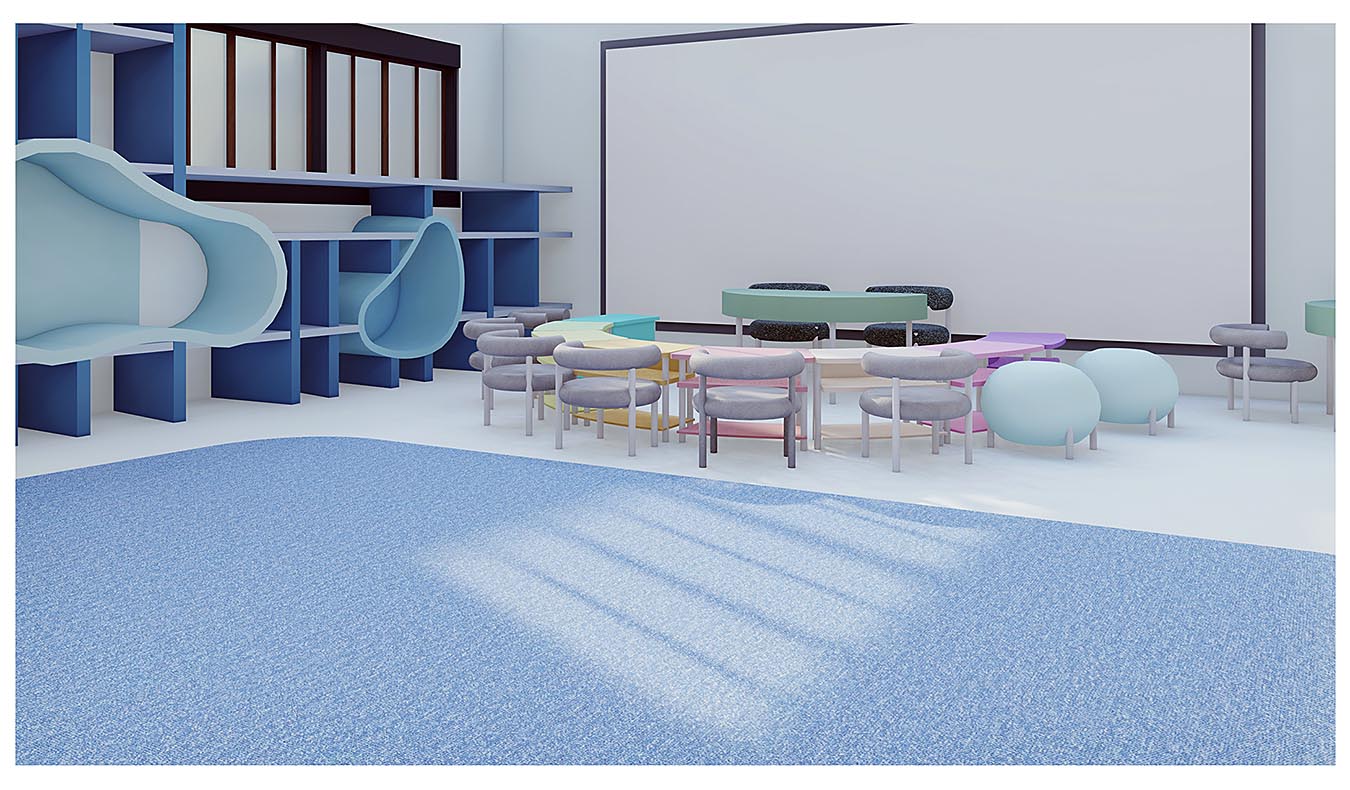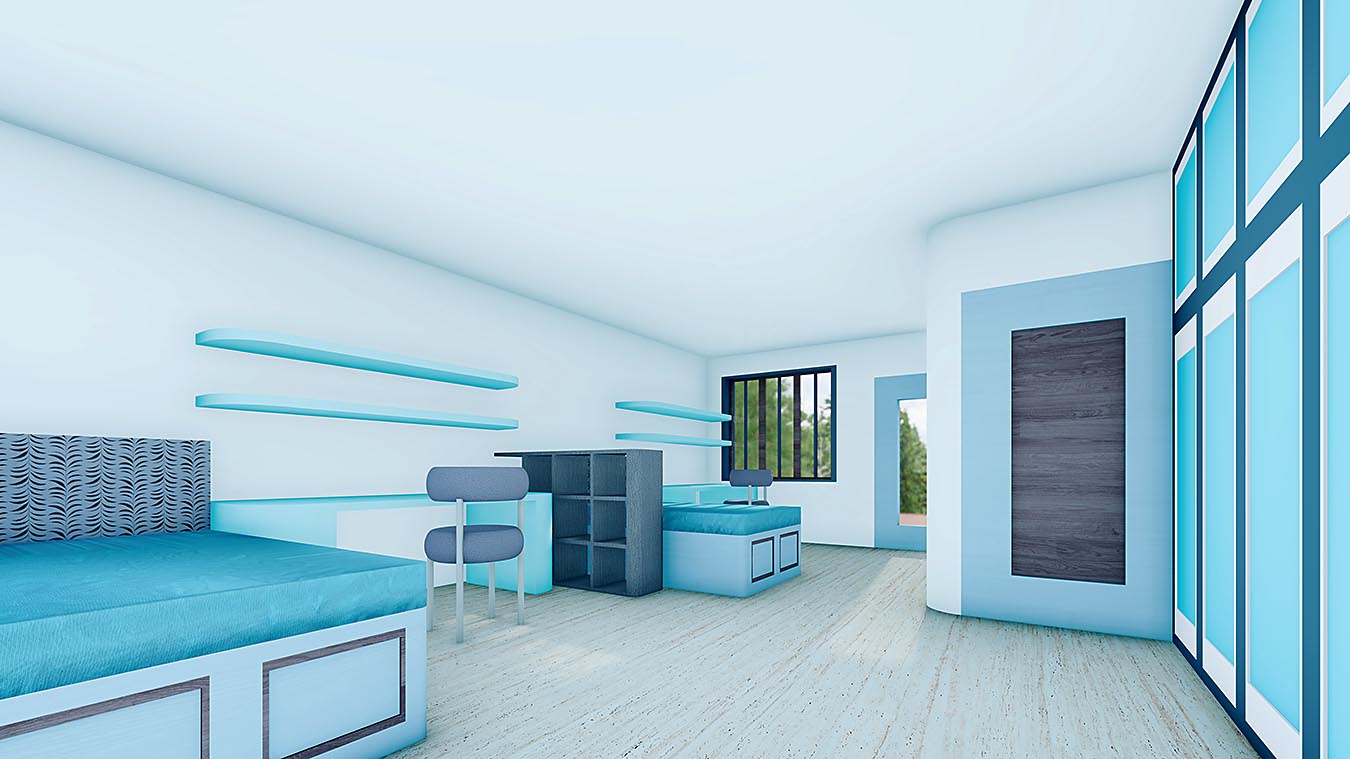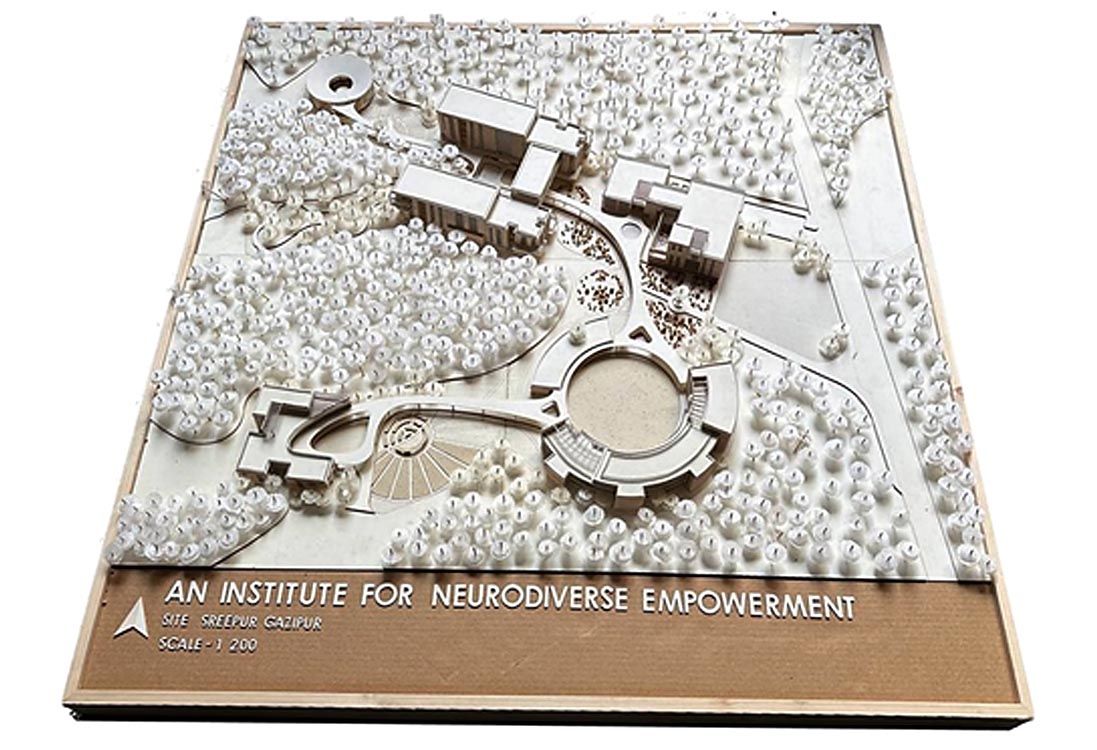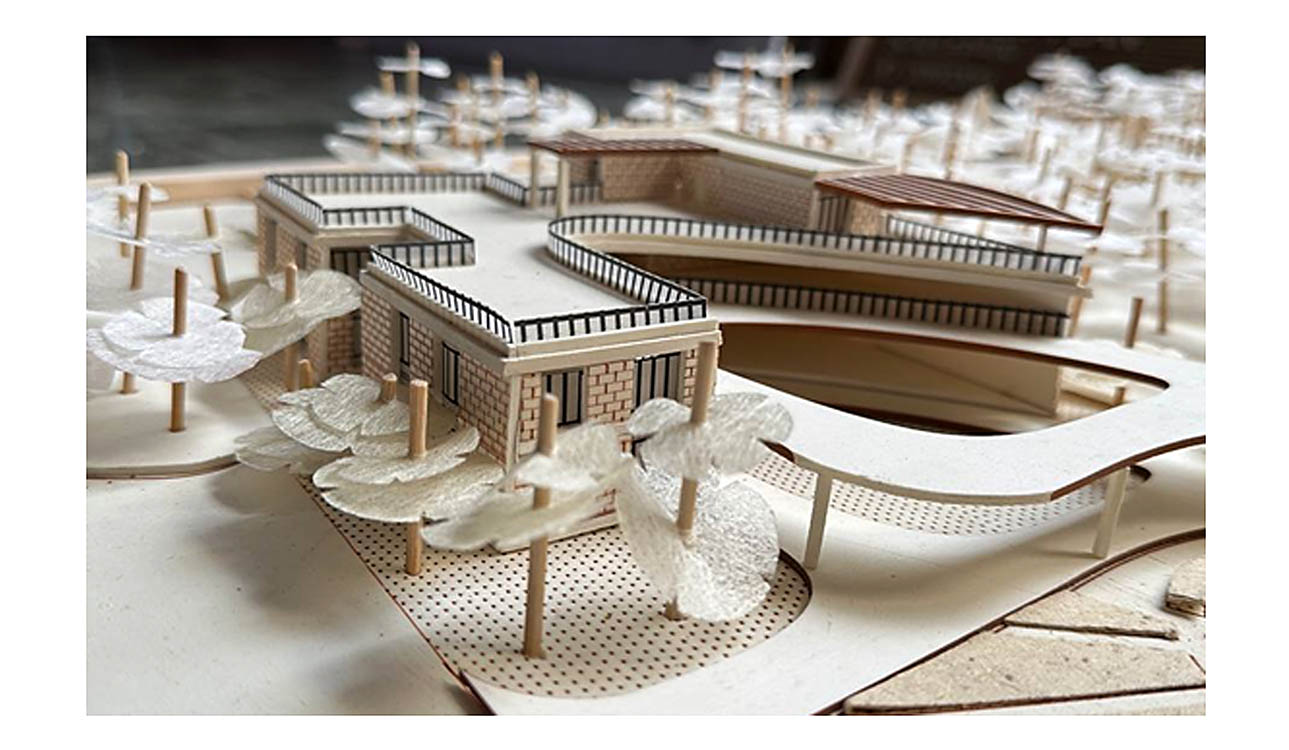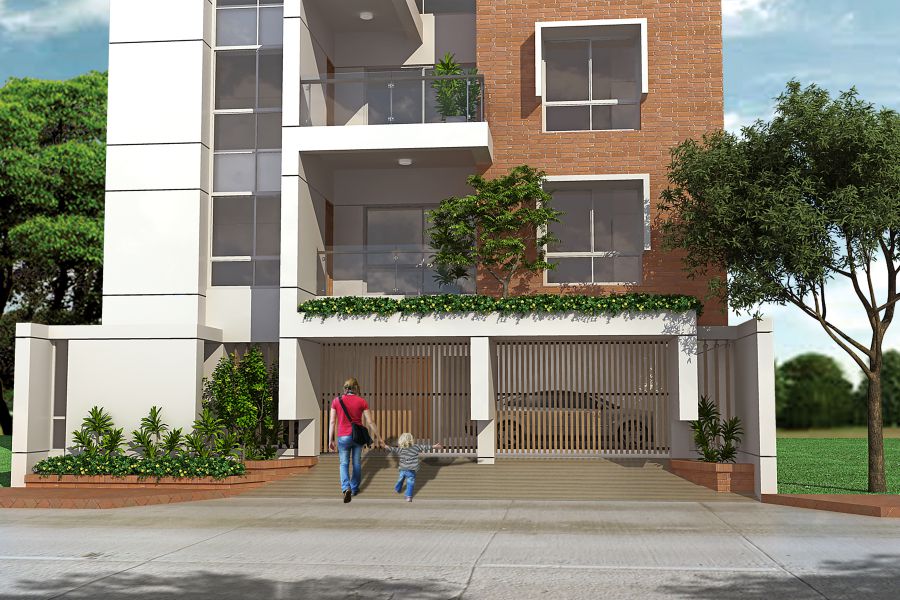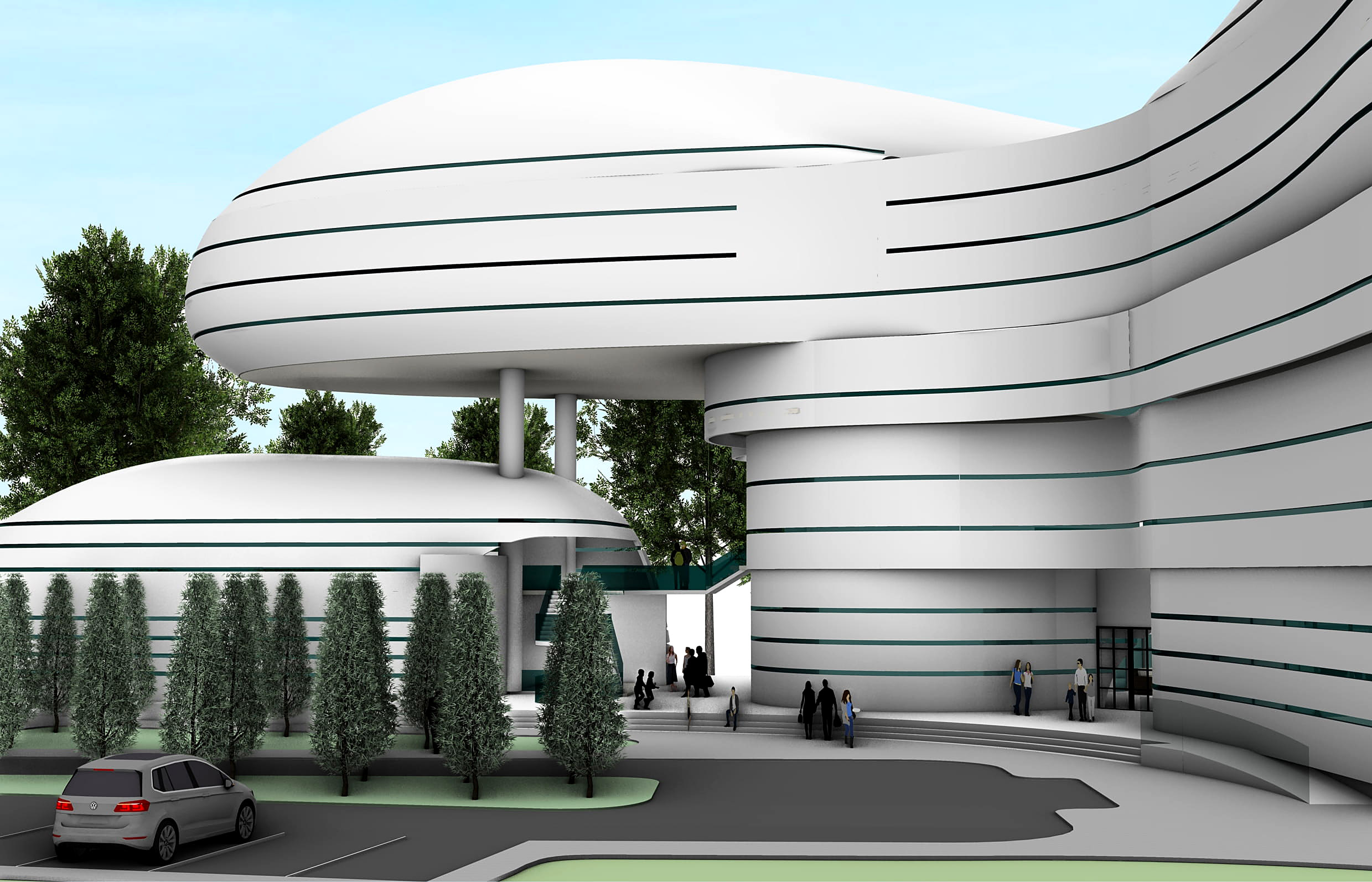Exploring The Seamless Neuroscape: An Institute For
Neurodiverse Empowerment
Conceptualization
"Exploring the Seamless Neuroscape" aims to create a space where all sensory elements are meticulously arranged to maintain sensory levels and sequences, while transitional zones between these elements are designed to function as preparatory spaces. This approach ensures a harmonious balance from a neurodiverse perspective, facilitating smooth transitions between different functions and making the overall journey mentally effortless.

Conceptual Diagram © Mubasshira Maahjabeen Lamya | MIST
The site was selected by the client, which is located in the village Noyapara within the Daree-Khonekhani Union of Sreepur, Gazipur. It occupies around 4.7 acre site owned by the client. The site is surrounded by a green forest, which belongs to the government.
Design Analysis:
The entire site has been meticulously planned to facilitate smooth transitions through all sensory spaces. The pathway is strategically designed to gradually increase the sensory level, leading to a high sensory zone, and vice versa. This design aids in anticipating the upcoming function, with the sensory level setting the mood accordingly.

Plan Describing Sensory Experience © Mubasshira Maahjabeen Lamya | MIST
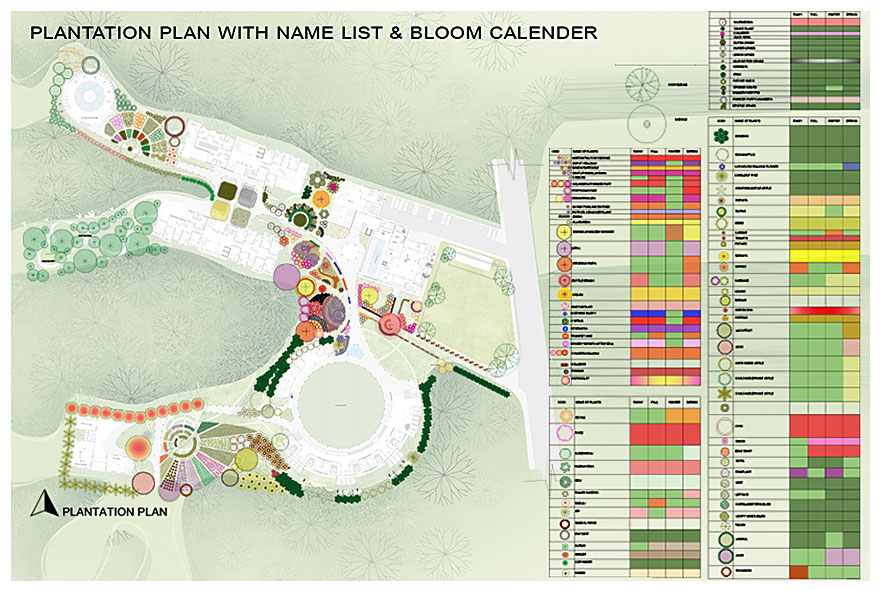
Plantation Plan With Name List © Mubasshira Maahjabeen Lamya | MIST
To comprehend the smooth transition, the following perspective is analyzed: The pathway is viewed from the dormitory, leading to the dining and therapy spaces. The dormitory represents a low sensory function, where students transition from their private spaces, while the dining area is a high sensory activity zone. To facilitate a seamless transition, the pathway is designed with carefully chosen colors, plants, and other elements. These elements provide a sequential view, ensuring a gradual change in sensory experience along the pathway
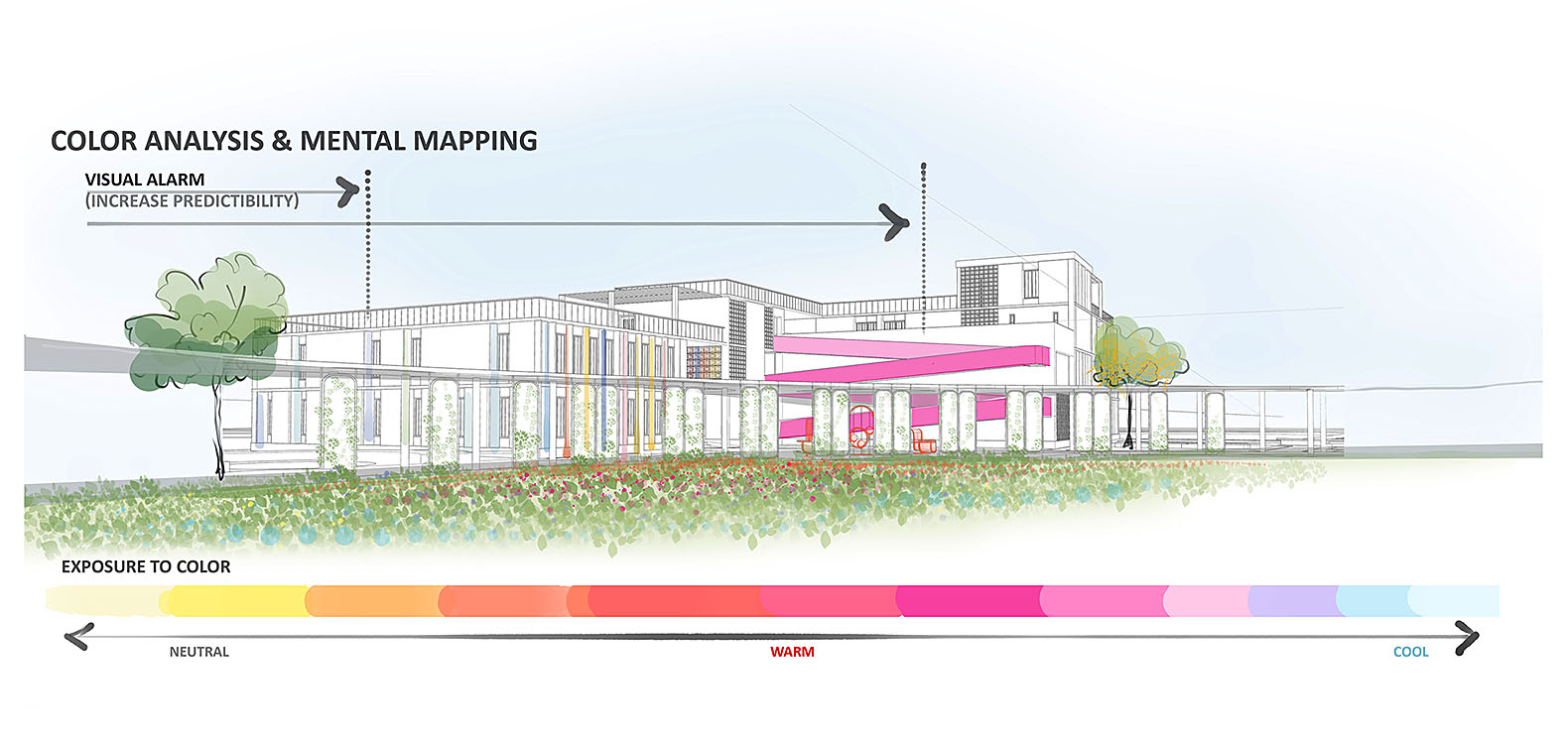
Seamless Transition Though the Sensory Zones © Mubasshira Maahjabeen Lamya | MIST
From the courtyard of the dorm, the first noticeable features are the bright yellow seating area and a red-colored ramp. These vibrant hues alert individuals that there is a high sensory area but it is located farther away. Closer than the seating area and ramp, the vertical color strips of the dining area are visible. These colors are not overly vibrant, indicating a moderate sensory space. Closest to the courtyard are the light and softly colored flowers. Their inviting hues serve as low sensory indicators, creating a gentle transition for individuals approaching from the dormitory courtyard Thus, a gradual transition is ensured from the low sensory zone to a high sensory zone. Visual cues have been employed in this node, as specific types of sensory stimulation aid in creating permanent memories and facilitating wayfinding. Similarly, the pathway from the dining area leading to the school, which is a lower sensory area than the dining, utilizes another sense—sound—to make the journey seamless and identify what comes next.
SIMILAR POST
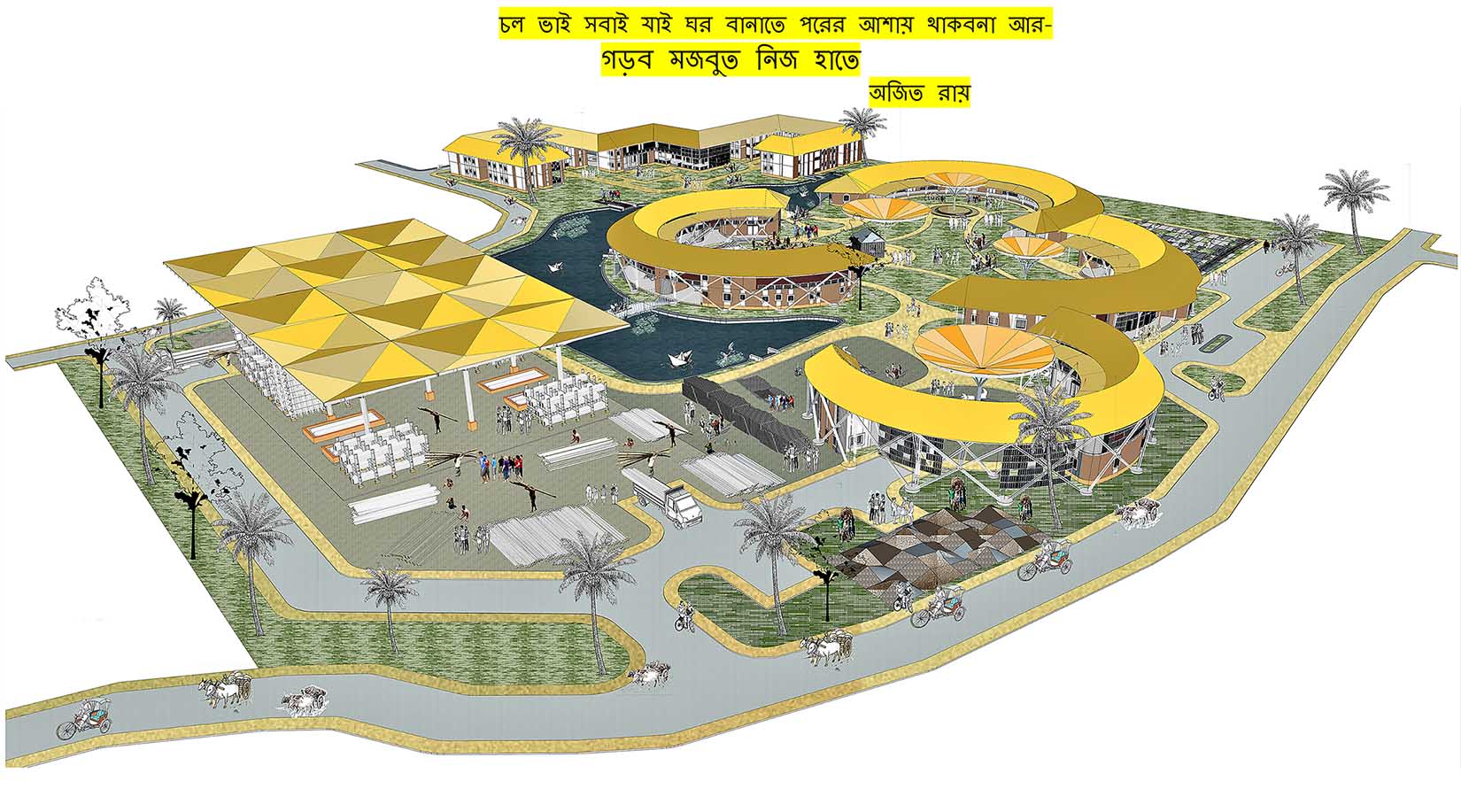
A Vernacular Architectural Learning Centre
Lorem, ipsum dolor sit...

Design of A Commercial High-rise Building
Lorem, ipsum dolor sit...
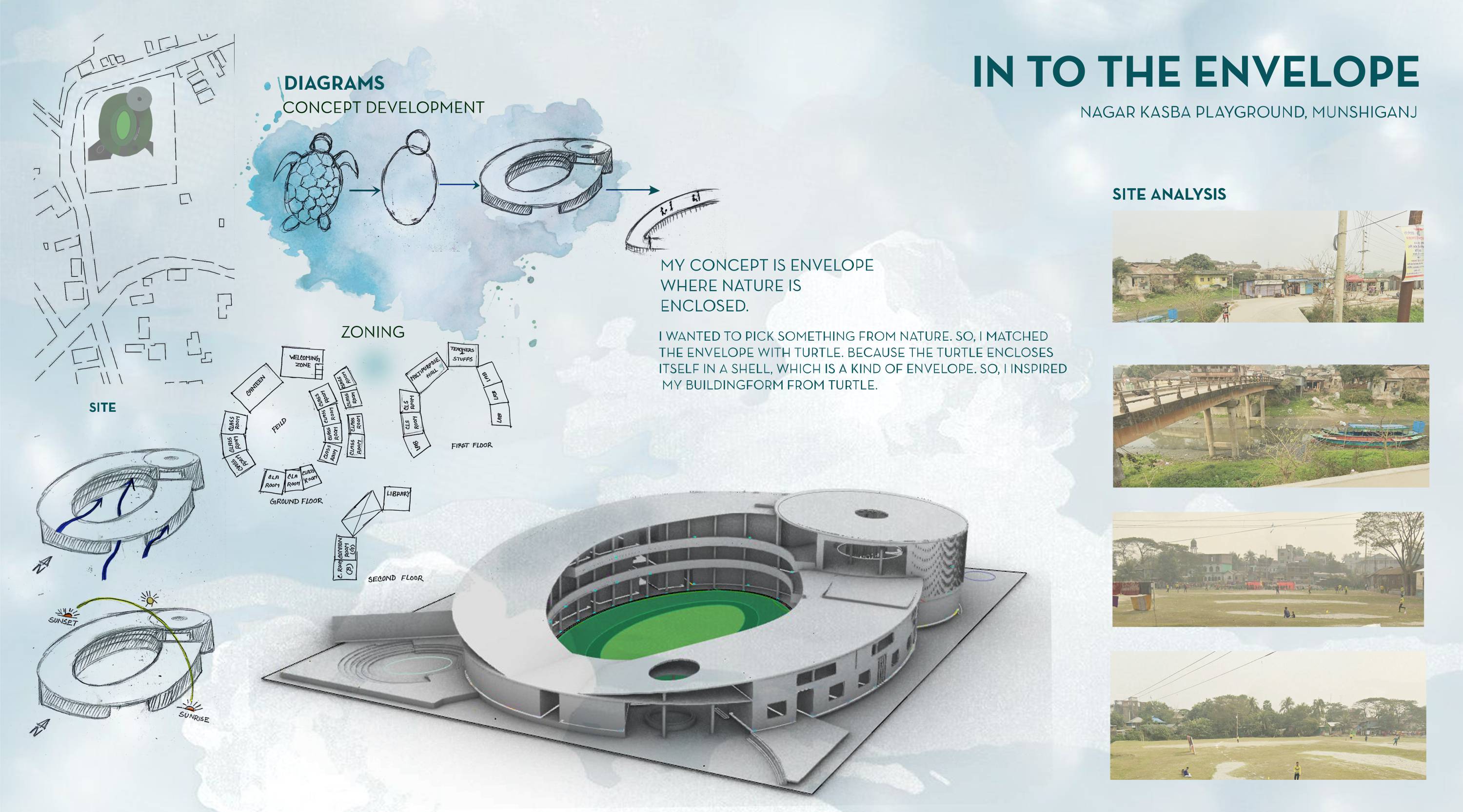
Design of a Traditional Community School
Lorem, ipsum dolor sit...

Design of An Exhibition Center
Lorem, ipsum dolor sit...
RECENT UPDATES
A Vernacular Architectural Learning Centre
23 November, 2023
Design of A Commercial High-rise Building
19 November, 2023
Design of a Traditional Community School
25 September, 2023
Design of An Exhibition Center
10 September, 2023
MOST VISITED
Design of A Commercial High-rise Building
19 November, 2023 || Total views: 28
Paramount Concord
7 August, 2023 || Total views: 19
Iqbal Residence
7 August, 2023 || Total views: 18
Design of E-commerce Museum
7 August, 2023 || Total views: 13
